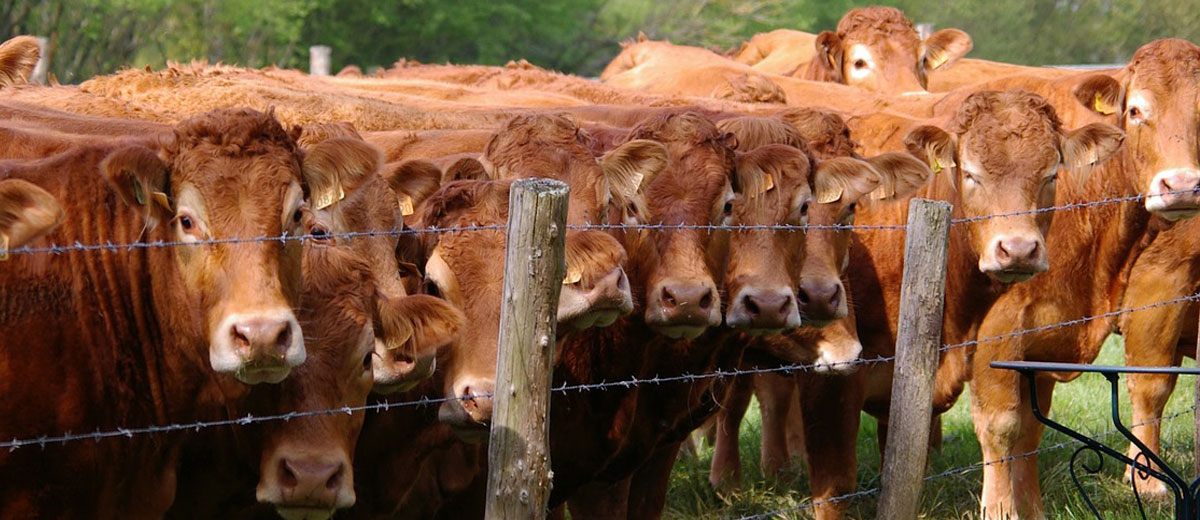
Setting Up for a Successful Breeding Season
By Jessica Smith, PAg., Livestock and Feed Extension Specialist
An ideal calving interval is 63 days long. This encompasses three estrus cycles, at 21 days per cycle. At a minimum, you may want your calving distribution to look similar to the following: 60 per cent of calves born in the first cycle, 24 per cent born in the second cycle and 10 per cent born in the third cycle. The Beef Cattle Research Council suggests a percentage ratio of 70:20:10 per cent as the ideal distribution. Cows and bulls in good nutritional status and body condition going in to the breeding season can help you achieve these goals. A short breeding season of 60 to 90 days will also help to achieve these targets. Keeping accurate records can help determine where improvements could be made.
For reproduction to be successful, cows should be in good condition with a body condition score of 2.5-3 going in to the breeding season. This can be achieved by providing proper nutrition throughout the year. Having your winter feed tested and formulating a ration can ensure you are providing adequate nutrients throughout the winter. It is also important to provide proper minerals while animals are on pasture in the spring/summer/fall months.
Some benefits of an ideal body condition score are:
- cows return to heat and rebreed up to 30 days sooner than otherwise;
- pregnancy rates are double those of thin cows;
- shorter breeding and calving seasons can lead to a more uniform calf crop;
- increased milk production and colostrum quality; and
- healthier calves that wean at heavier weights and improved heifer development.
Bull management and fertility are also important when it comes to meeting goals in regards to calving distribution. This relates directly to bull condition and nutrition. Rations can be formulated specifically to meet the nutritional requirements of your bull herd. A bull breeding soundness evaluation in the spring, prior to breeding, will advise which bulls are fit to breed. Proper bull to cow ratio can also increase the number of bred cows. For mature bulls, a 1:25 or 1:30 ratio is usually recommended. When it comes to bull numbers, keep in mind that yearling bulls will likely breed less cows than more mature bulls. These numbers can be adjusted according to pasture size and type of terrain.
Limiting your breeding season to 60 to 90 days will help tighten up your calving distribution. This would involve pulling your bulls from the cow pasture at the end of the breeding season. Pregnancy checking cows in the fall can help in making culling decisions based on late bred cows or cows that were not bred. This offers some benefits at calving time including a more uniform group of calves, heavier calves at weaning, and being able to focus your calving labour to a shorter period of time.
It may be beneficial to set reproductive goals for you cow herd, such as increasing pregnancy rate, increasing the amount of cows that are bred in the first cycle, or shortening the breeding season. Keeping animal performance records can help you work towards these goals. Record keeping can be as simple as writing information down in a calving record book or as complex as using detailed record keeping software. You can track as much or as little information as is useful to you. Keeping track of the dates bulls were turned out with cows and pulled from the pasture and of actual calving dates can provide valuable insights into the reproductive performance of your herd.
Proper animal management and record keeping can help to improve the reproductive efficiency of the herd. The Beef Cattle Research Council’s Value of Calving Distribution Calculator can help you to better understand the effects of calving distribution on your operation.
For the latest information and for more updates on everything Kindersley ‘Like’ the Kindersley Social Facebook page below…








































